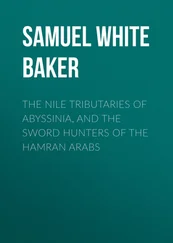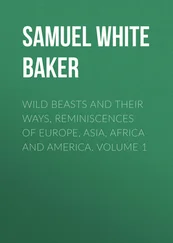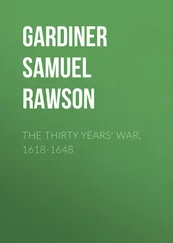Samuel White Baker - Eight Years' Wanderings in Ceylon
Здесь есть возможность читать онлайн «Samuel White Baker - Eight Years' Wanderings in Ceylon» — ознакомительный отрывок электронной книги совершенно бесплатно, а после прочтения отрывка купить полную версию. В некоторых случаях можно слушать аудио, скачать через торрент в формате fb2 и присутствует краткое содержание. Издательство: Иностранный паблик, Жанр: Путешествия и география, История, foreign_edu, foreign_antique, foreign_prose, на английском языке. Описание произведения, (предисловие) а так же отзывы посетителей доступны на портале библиотеки ЛибКат.
- Название:Eight Years' Wanderings in Ceylon
- Автор:
- Издательство:Иностранный паблик
- Жанр:
- Год:неизвестен
- ISBN:нет данных
- Рейтинг книги:4 / 5. Голосов: 1
-
Избранное:Добавить в избранное
- Отзывы:
-
Ваша оценка:
- 80
- 1
- 2
- 3
- 4
- 5
Eight Years' Wanderings in Ceylon: краткое содержание, описание и аннотация
Предлагаем к чтению аннотацию, описание, краткое содержание или предисловие (зависит от того, что написал сам автор книги «Eight Years' Wanderings in Ceylon»). Если вы не нашли необходимую информацию о книге — напишите в комментариях, мы постараемся отыскать её.
Eight Years' Wanderings in Ceylon — читать онлайн ознакомительный отрывок
Ниже представлен текст книги, разбитый по страницам. Система сохранения места последней прочитанной страницы, позволяет с удобством читать онлайн бесплатно книгу «Eight Years' Wanderings in Ceylon», без необходимости каждый раз заново искать на чём Вы остановились. Поставьте закладку, и сможете в любой момент перейти на страницу, на которой закончили чтение.
Интервал:
Закладка:
We may take it for granted, therefore, that when the king came to Newera Ellia his visit had some object, and we presume that he came to look at the condition of his water-courses and to superintend the digging for precious stones; in the same manner that Ceylon governors of past years visited Arippo during the pearlfishing.
The "diggings" of the kings of Kandy must have been conducted on a most extensive scale. Not only has the Vale of Rubies been regularly turned up for many acres, but all the numerous plains in the vicinity are full of pits, some of very large size and of a depth varying from three to seventeen feet. The Newera Ellia Plain, the Moonstone Plain, the Kondapallé Plain, the Elk Plains, the Totapella Plains, the Horton Plains, the Bopatalava Plains, the Augara Plains (translated "the Diggings"), and many others extending over a surface of thirty miles, are all more or less studded by deep pits formed by the ancient searchers for gems, which in those days were a royal monopoly.
It is not to be supposed that the search for gems would have been thus persevered in unless it was found to be remunerative; but it is a curious fact that no Englishmen are ever to be seen at work at this employment. The natives would still continue the search, were they permitted, upon the "Vale of Rubies;" but I warned them off on purchasing the land; and I have several good specimens of gems which I have discovered by digging two feet beneath the surface.
The surface soil being of a light, peaty quality, the stones, from their greater gravity, lie beneath, mixed with a rounded quartz gravel, which in ages past must have been subjected to the action of running water. This quartz gravel, with its mixture of gems, rests upon a stiff white pipe-clay.
In this stratum of gravel an infinite number of small, and for the most part worthless, specimens of gems are found, consisting of sapphire, ruby, emerald, jacinth, tourmaline, chrysoberyl, zircon, cat's-eye, "moonstone," and "star-stone." Occasionally a stone of value rewards the patient digger; but, unless he thoroughly understands it, he is apt to pass over the gems of most value as pieces of ironstone.
The mineralogy of Ceylon has hitherto been little understood. It has often been suggested as the "Ophir" of the time of Solomon, and doubtless, from its production of gems, it might deserve the name.
It has hitherto been the opinion of most writers on Ceylon that the precious metals do not exist in the island; and Dr. Davy in his work makes an unqualified assertion to that effect. But from the discoveries recently made, I am of opinion that it exists in very large quantities in the mountainous districts of the island.
It is amusing to see the positive assertions of a clever man upset by a few uneducated sailors.
A few men of the latter class, who had been at the gold diggings both in California and Australia, happened to engage in a ship bound for Colombo. Upon arrival they obtained leave from the captain for a stroll on shore, and they took the road toward Kandy, and when about half-way it struck them, from the appearance of the rocks in the uneven bed of a river, called the Maha Oya, "that gold must exist in its sands." They had no geological reason for this opinion; but the river happened to be very like those in California in which they had been accustomed to find gold. They accordingly set to work with a tin pan to wash the sand, and to the astonishment of every one in Ceylon, and to the utter confusion of Dr. Davy's opinions, they actually discovered gold!
The quantity was small, but the men were very sanguine of success, and were making their preparations for working on a more extensive scale, when they were all prostrated by jungle fever—a guardian-spirit of the gold at Amberpussé, which will ever effectually protect it from Europeans.
They all returned to Colombo, and, when convalescent, they proceeded to Newera Ellia, naturally concluding that the gold which existed in dust in the rivers below must be washed down from the richer stores of the mountains.
Their first discovery of gold at Newera Ellia was on the 14th June, 1854, on the second day of their search in that locality. The first gold was found in the "Vale of Rubies."
I had advised them to make their first search in that spot for this reason: that, as the precious stones had there settled in the largest numbers, from their superior gravity, it was natural to conclude that, if gold should exist, it would, from its gravity, be somewhere below the precious stones or in their vicinity.
From the facility with which it has been discovered, it is impossible to form an opinion as to the quantity or the extent to which it will eventually be developed. It is equally impossible to predict the future discoveries which may be made of other minerals. It is well known that quicksilver was found at Cotta, six miles from Colombo, in the year 1797. It was in small quantities, and was neglected by the government, and no extended search was prosecuted. The present search for gold may bring to light mineral resources of Ceylon which have hitherto lain hidden.
The minerals proved to exist up to the present time are gold, quicksilver, plumbago and iron. The two latter are of the finest quality and in immense abundance. The rocks of Ceylon are primitive, consisting of granite, gneiss and quartz. Of these the two latter predominate. Dolomite also exists in large quantities up to an elevation of five thousand feet, but not beyond this height.
Plumbago is disseminated throughout the whole of both soil and rocks in Ceylon, and may be seen covering the surface in the drains by the road side, after a recent shower.
It is principally found at Ratnapoora and at Belligam, in large, detached kidney-shaped masses, from four to twenty feet below the surface. The cost of digging and the transport are the only expenses attending it, as the supply is inexhaustible. Its component parts are nineteen of carbon and one of iron.
It exists in such quantities, in the gneiss rocks that upon their decomposition it is seen in bright specks like silver throughout.
This gneiss rock, when in a peculiar stage of decomposition, has the appearance and consistency of yellow brick, speckled with plumbago. It exists in this state in immense masses, and forms a valuable buildingstone, as it can be cut with ease to any shape required, and, though soft when dug, it hardens by exposure to the air. It has also the valuable property of withstanding the greatest heat; and for furnace building it is superior to the best Stourbridge fire-bricks.
The finest quality of iron is found upon the mountains in various forms, from the small iron-stone gravel to large masses of many tons in weight protruding from the earth's surface.
So fine is that considered at Newera Ellia and the vicinity that the native blacksmiths have been accustomed from time immemorial to make periodical visits for the purpose of smelting the ore. The average specimens of this produce about eighty per cent. of pure metal, even by the coarse native process of smelting. The operations are as follows:
Having procured the desired amount of ore, it is rendered as small as possible by pounding with a hammer.
A platform is then built of clay, about six feet in length by three feet in height and width.
A small well is formed in the centre of the platform, about eighteen inches in depth and diameter, egg-shaped.
A few inches from the bottom of this well is an air-passage, connected with a pipe and bellows.
The well is then filled with alternate layers of charcoal and pulverized iron ore; the fire is lighted, and the process of smelting commences.
The bellows are formed of two inflated skins, like a double "bagpipe." Each foot of the "bellows-blower" is strapped to one skin, the pipes of the bellows being fixed in the air-hole of the blast. He then works the skins alternately by moving his feet up and down, being assisted in this treadmill kind of labor by the elasticity of two bamboos, of eight or ten feet in length, the butts of which, being firmly fixed in the ground, enable him to retain his balance by grasping one with either hand. From the yielding top of each bamboo, a string descends attached to either big toe; thus the downward pressure of each foot upon the bellows strains upon the bamboo top as a fish bears upon a fishing-rod, and the spring of the bamboo assists him in lifting up his leg. Without this assistance, it would be impossible to continue the exertion for the time required.
Читать дальшеИнтервал:
Закладка:
Похожие книги на «Eight Years' Wanderings in Ceylon»
Представляем Вашему вниманию похожие книги на «Eight Years' Wanderings in Ceylon» списком для выбора. Мы отобрали схожую по названию и смыслу литературу в надежде предоставить читателям больше вариантов отыскать новые, интересные, ещё непрочитанные произведения.
Обсуждение, отзывы о книге «Eight Years' Wanderings in Ceylon» и просто собственные мнения читателей. Оставьте ваши комментарии, напишите, что Вы думаете о произведении, его смысле или главных героях. Укажите что конкретно понравилось, а что нет, и почему Вы так считаете.












